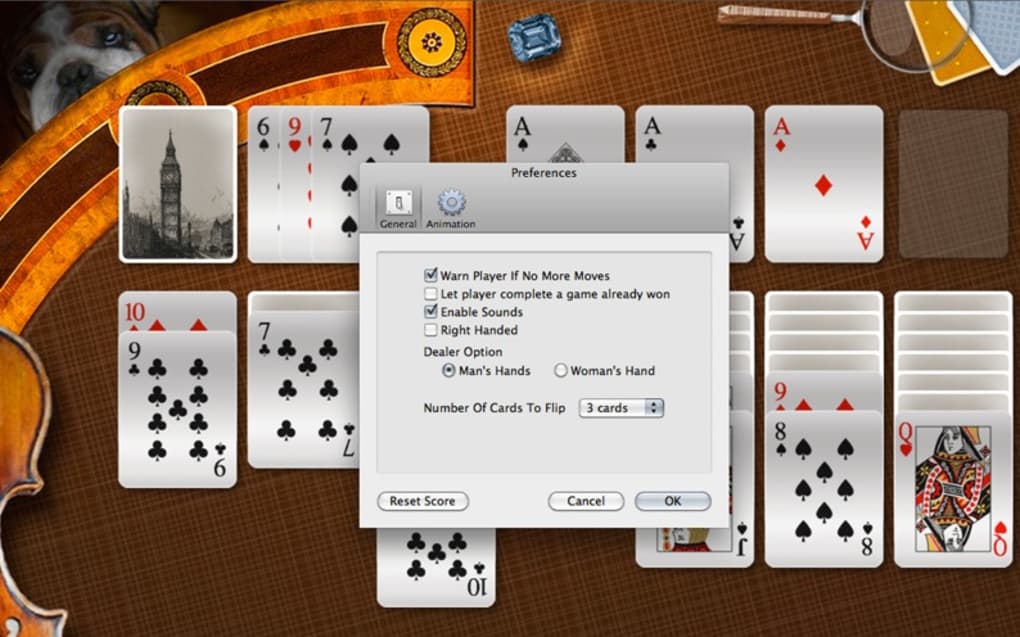



In the meantime, try one of the fixes, they should get your Mac back online in no time.
#Mcsolitaire Patch
Why does this error show up at all? I assume this is just a bug with how iOS interacts with certain routers DHCP management, it happen to Apple’s own Airport too so perhaps that will spur a patch sooner than later, but by no means is this limited to Apple routers, and you can encounter it on any wi-fi network (and even some wired networks too).
#Mcsolitaire mac os x
Apparently these iOS devices like to maintain the same IP address and will attempt to force themselves onto the same IP that they had previously been assigned, which can lead to the error message.ġ: The easiest solution is to just reset the router, but that can be a pain depending on your access to the router itself.Ģ: If resetting the router is a no go, you can also try to renew your DHCP lease in Mac OS X either through the command line (as the linked article shows) or through the Network settings System Preference panels as described here.ģ: The other option is to manually set an IP address to a static IP and have the IP range be far enough apart so that the devices do not conflict. For whatever reason it seems that another Mac, or the iPod touch, iPad, and iPhone is often the culprit. It looks to be a problem with the DHCP server, which mistakenly assigns the same IP address to two devices, but don’t blame your router quite yet. While it doesn’t have all the necessary features that would make it accommodating to beginner players, its turn-based combat mechanics-combined with its other interesting gameplay and its cute art style-more than make up for a great time once you get how it works.3 Tips to Resolving the IP Conflict in Mac OS X Overall, Die in the Dungeon is a great choice for any fans of dice-building or rogue-lite card games. Gameplay aside, the graphics are pretty charming but the interface lacks some useful elements, as well-such as a settings menu and the Give Up button exiting the game.
#Mcsolitaire how to
You just need to get used to how to place the dice on the board to get the most optimal of turns. You only get descriptions of the actions-and the font for that can be hard to read.įor players familiar with this subgenre of card or strategy game, however, this title is actually pretty easy to master. However, these advanced mechanics can be confusing for beginners since there’s absolutely no tutorial at all. The spots where you put dice matter, as well, if you’re using those value multiplier dice.

Unfortunately, this limit doesn’t increase as you go on to higher levels-although the selection of dice does expand. Take note that you can only place a maximum of three dice. Each dice is colored and represents an action you can take during your turn: the basic ones being attacking a single target, blocking, healing, and adding more points to the value of another action. Your goal in Die in the Dungeon is to progress through all 20 floors of a magical dungeon, defeating every enemy in a fight.


 0 kommentar(er)
0 kommentar(er)
